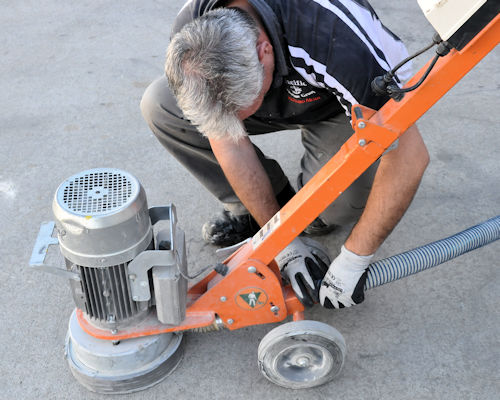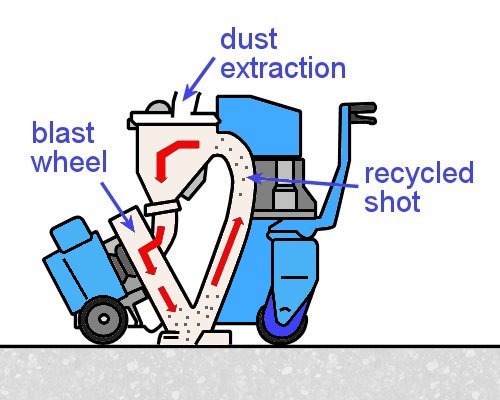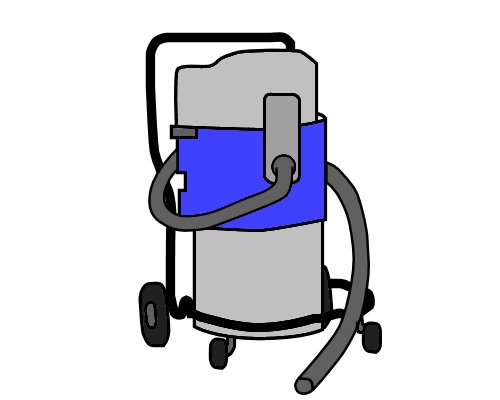Removing adhesive residue
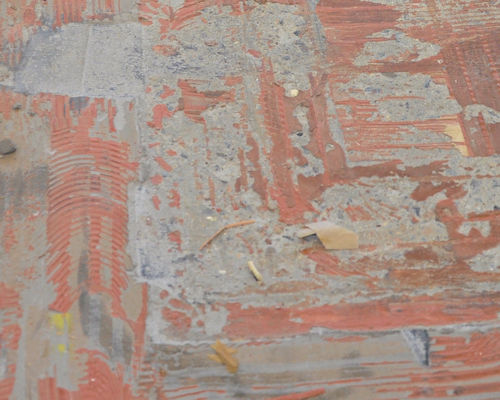 Audio for slide 1 (mp3 |6|KB)
Audio for slide 1 (mp3 |6|KB)
Once the old floor covering and underlay have been taken up, any remaining adhesive residue will need to be removed.
Some installers take shortcuts at this stage of the job and leave bits of old residue behind because they think it's too time consuming to strip it back.
But this can cause its own problems.

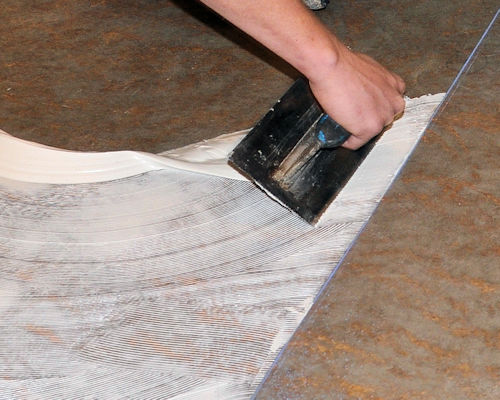 Audio for slide 2 (mp3 |6|KB)
Audio for slide 2 (mp3 |6|KB)
One of the potential problems is that the ridges from the old glue will affect your ability to control the spread rate of the new adhesive.
Manufacturers specify certain-sized notched trowels to ensure that the spread rate is maintained at a precise level.
If you change the spread rate, you'll affect the working time and bonding properties of the new adhesive.
You'll also void the warranty that the manufacturer provides on the performance of their adhesive.

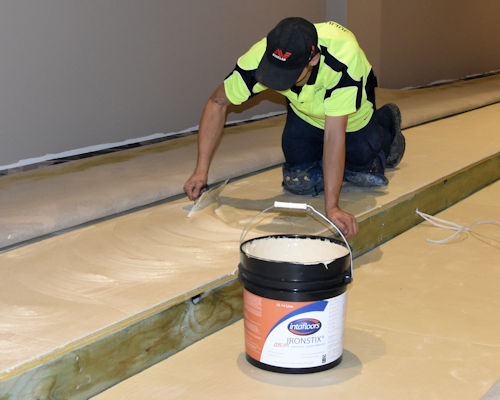 Audio for slide 3 (mp3 |6|KB)
Audio for slide 3 (mp3 |6|KB)
Another potential problem is the fact that adhesives were often made with solvent-based formulations in years past.
These days, they tend to be water based, as manufacturers move towards more environmentally-friendly formulations.
So if you apply a new water-based adhesive over an old solvent-based residue, you're likely to have a compatibility problem which might affect the strength of the bond.
Below are the main methods used to remove old adhesive. We'll deal with the issue of asbestos-based adhesives at the end of this discussion.

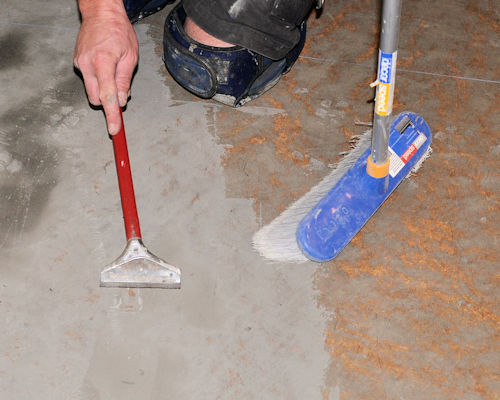 Audio for slide 4 (mp3 |6|KB)
Audio for slide 4 (mp3 |6|KB)
Hand scraping
Hand scraping is very labour intensive, but it can still be the most efficient way to remove small quantities of adhesive, particularly if it's only around the perimeter of a floor surface.
It is possible to combine hand scraping with chemicals that soften the adhesive - but you need to ensure that the chemical won't leave traces behind that will react with the new adhesive or floor coverings.

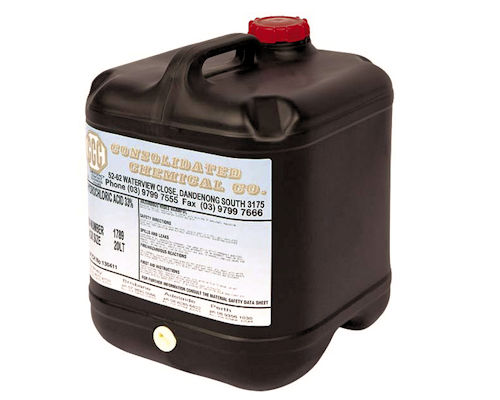 Audio for slide 5 (mp3 |6|KB)
Audio for slide 5 (mp3 |6|KB)
Acid washing
For concrete substrates, some people like to wash the surface with acid.
However, this should only ever be used as a last resort, because most levelling compound manufacturers will not warrant their products unless the concrete surface has been mechanically ground to remove contaminants.
If you do decide to acid wash the surface, be careful to keep the solution within the confines of the slab and to completely remove any residue when you finish.
Hydrochloric acid is generally used. In commercial quantities, it's often called muriatic acid.

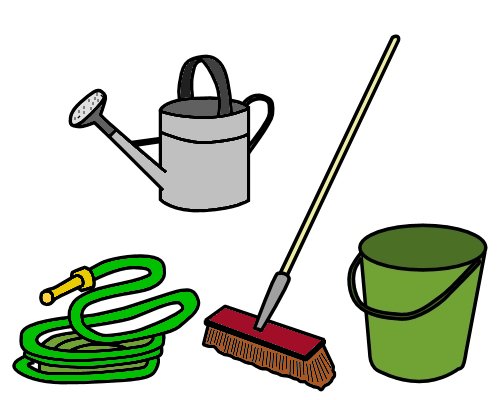 Audio for slide 6 (mp3 |6|KB)
Audio for slide 6 (mp3 |6|KB)
To prepare the solution, mix 1 part acid to 10 parts water.
Apply the solution with a watering can and use a stiff-bristled broom to spread it around the floor.
Once the reaction has taken place, wash it off and make sure that it's completely neutralised before leaving the floor to dry.
Note that acid washes are not effective in removing grease and oil. The same applies to solvent washes, which have a tendency to drive the contaminants further into the concrete pores.

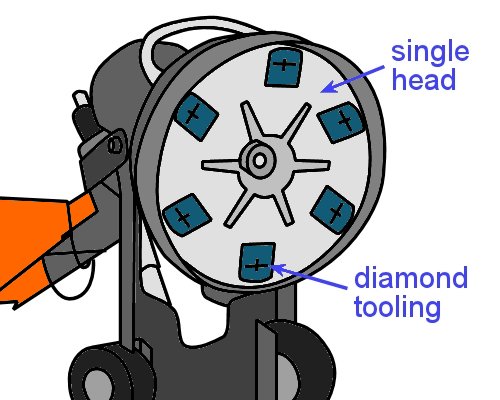 Audio for slide 8 (mp3 |6|KB)
Audio for slide 8 (mp3 |6|KB)
Grinders are available as hand-held power tools, walk-behind machines and ride-on machines.
They use abrasive discs, often with diamond or tungsten carbide tooling, to apply a circular rubbing action to the concrete surface.
Grinders are the most suitable for removing adhesive, because they tend to do the least amount of damage to the concrete surface.

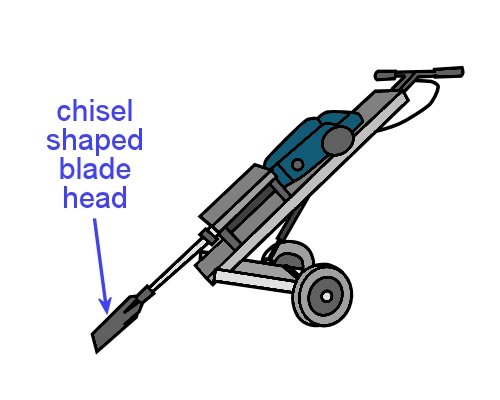 Audio for slide 10 (mp3 |6|KB)
Audio for slide 10 (mp3 |6|KB)
Chisel hammers are basically jack hammers fitted with a wide chisel-shaped blade head.
They can be used for taking up the old floor covering as well as removing adhesive residue.
Every grinding and chiselling machine has an optimal method of operation.
Some machines are designed to be moved in a circular motion as they're pushed up and down the floor in parallel lines.
Other machines have different processes. For more information on grinding techniques and the various types of tooling and machines available, go to the unit: Concrete grinding.

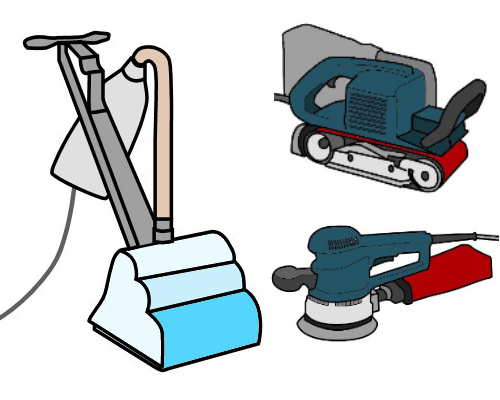 Audio for slide 11 (mp3 |6|KB)
Audio for slide 11 (mp3 |6|KB)
Sanding
Timber and wood-based surfaces generally need to be sanded back, since solvents and floor strippers don't work particularly well on these sorts of floors.
Drum sanders are best on floors that need a lot of material removed.
Belt sanders provide a finer finish but get clogged up more easily, so they're most effective when the surface only needs to be lightly sanded.
Orbital sanders and 'edgers' are used around skirting boards and in corners.

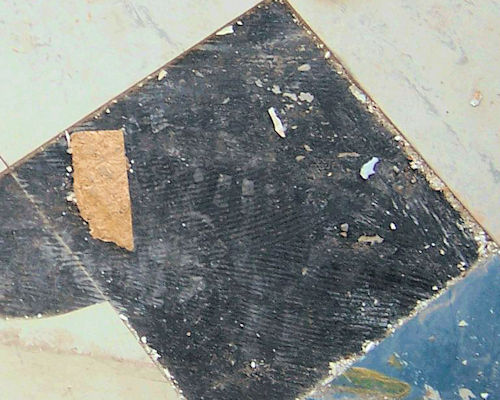 Audio for slide 13 (mp3 |6|KB)
Audio for slide 13 (mp3 |6|KB)
Dealing with 'cutback adhesive'
The photo at right is taken from the Asbestos awareness website, showing old vinyl tiles bonded to the subfloor with 'cutback adhesive'.
This black asphalt-based adhesive generally contains asbestos fibres.
If the cutback is still firmly bonded to the floor, it's often easiest to leave it in place and only remove the thick accumulations and brittle or loose material.
This is done by wet scraping and mopping the floor to avoid the creation of dust. A solvent-based chemical remover can also be used.
Always remember that you need to be very careful to minimise the amount of dust that's produced, and to wear the protective clothing appropriate for asbestos removal.
You must also follow proper disposal methods for asbestos based products.


Learning activity
Audio 14 (mp3 |6|KB)For this exercise, we'll put all the elements together for a removal job that involves taking up an old Axminster carpet from an office reception area.
Your task will be to draw up a 'job plan' for the whole process, starting with arriving at the worksite and inspecting the floor, and finishing with the clean-up once you've removed the carpet, underlay and adhesive.
Let's say that the project involves a front reception area measuring 7 metres by 5 metres, and that your supervisor has given you a total of 4 hours to complete the job. We'll assume that all equipment is already on-site and in good working order.
We'll also assume that the following details apply to the job:
- the broadloom carpet and underlay have been installed as a full spread dual bond system directly to a concrete subfloor
- the adhesive can be lifted through a combination of stripping with a walk-behind machine (powered by mains electricity) and hand scraping.
- the room is on the ground floor of the building, and there is a small step-up from the outside car park
- the front entrance is through a large double-door, with easy access to the carpark, where the skip bin is already in place.
- all furniture has been removed, and there are no obstacles in the way.
Before you complete this exercise, you may wish to read the next lesson, just to remind yourself of the sorts of issues you should consider when cleaning up the work area at the end of a removal job.
Use the template in your workbook to draw up the job plan.
Remember that the total time allocated to the job is 4 hours, so you'll need to divide up that time into segments, according to how long you think each stage will take.






